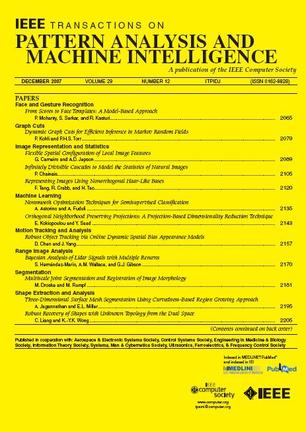CLEAN:分类知识驱动的压缩框架,用于高效的3D目标检测。
IF 20.8
1区 计算机科学
Q1 COMPUTER SCIENCE, ARTIFICIAL INTELLIGENCE
IEEE Transactions on Pattern Analysis and Machine Intelligence
Pub Date : 2025-06-24
DOI:10.1109/tpami.2025.3582706
引用次数: 0
摘要
深度神经网络(dnn)在基于激光雷达的3D物体检测(LiDAR-3DOD)中非常有效,但由于其繁琐的参数和计算,其部署仍然令人望而生畏。知识蒸馏(Knowledge distillation, KD)在激光雷达- 3dod中压缩深度神经网络是一种很有前途的方法。然而,大多数现有的KD方法在同质检测器之间传递的知识不足,并且没有彻底探索最佳的学生架构,导致紧凑的学生检测器的增益不足。为此,我们提出了一个类别知识驱动的压缩框架来实现高效的基于激光雷达的3D探测器。首先,我们克服了齐次对的局限性,将知识从两阶段的教师检测器提取到一阶段的学生检测器。为了在这些异构对中进行KD,我们探索了异构检测器之间的差距,并引入了类别知识驱动KD (CaKD),其中包括面向学生的蒸馏和面向两阶段的标签分配蒸馏。其次,为了寻找紧凑学生检测器的最优结构,我们引入了一种屏蔽类别知识驱动的结构化剪枝方案。该方案通过分析过滤器去除前后与前景区域相关的类别预测的变化来评估过滤器的重要性,并相应地修剪不太重要的过滤器。最后,我们提出了一种改进的iou感知冗余消除模块,以去除冗余的假阳性样本,从而进一步提高检测器的准确性。在各种点云数据集上的实验表明,我们的方法取得了令人印象深刻的结果。例如,在KITTI上,几个压缩的一级检测器在效率和精度方面都优于两级检测器。此外,在word -mini上,我们的框架将CenterPoint的内存占用减少了5.2倍,并将L2 mAPH提高了0.55美元。本文章由计算机程序翻译,如有差异,请以英文原文为准。
CLEAN: Category Knowledge-Driven Compression Framework for Efficient 3D Object Detection.
Deep neural networks (DNNs) are potent in LiDAR-based 3D object detection (LiDAR-3DOD), yet their deployment remains daunting due to their cumbersome parameters and computations. Knowledge distillation (KD) is promising for compressing DNNs in LiDAR-3DOD. However, most existing KD methods transfer inadequate knowledge between homogeneous detectors, and do not thoroughly explore optimal student architectures, resulting in insufficient gains for compact student detectors. To this end, we propose a category knowledge-driven compression framework to achieve efficient LiDAR-based 3D detectors. Firstly, we distill knowledge from two-stage teacher detectors to one-stage student detectors, overcoming the limitations of homogeneous pairs. To conduct KD in these heterogeneous pairs, we explore the gap between heterogeneous detectors, and introduce category knowledge-driven KD (CaKD), which includes both student-oriented distillation and two-stage-oriented label assignment distillation. Secondly, to search for the optimal architecture of compact student detectors, we introduce a masked category knowledge-driven structured pruning scheme. This scheme evaluates filter importance by analyzing the changes in category predictions related to foreground regions before and after filter removal, and prunes the less important filters accordingly. Finally, we propose a modified IoU-aware redundancy elimination module to remove redundant false positive samples, thereby further improving the accuracy of detectors. Experiments on various point cloud datasets demonstrate that our method delivers impressive results. For example, on KITTI, several compressed one-stage detectors outperform two-stage detectors in both efficiency and accuracy. Besides, on WOD-mini, our framework reduces the memory footprint of CenterPoint by 5.2× and improves the L2 mAPH by 0.55$\%$.
求助全文
通过发布文献求助,成功后即可免费获取论文全文。
去求助
来源期刊
CiteScore
28.40
自引率
3.00%
发文量
885
审稿时长
8.5 months
期刊介绍:
The IEEE Transactions on Pattern Analysis and Machine Intelligence publishes articles on all traditional areas of computer vision and image understanding, all traditional areas of pattern analysis and recognition, and selected areas of machine intelligence, with a particular emphasis on machine learning for pattern analysis. Areas such as techniques for visual search, document and handwriting analysis, medical image analysis, video and image sequence analysis, content-based retrieval of image and video, face and gesture recognition and relevant specialized hardware and/or software architectures are also covered.

 求助内容:
求助内容: 应助结果提醒方式:
应助结果提醒方式:


